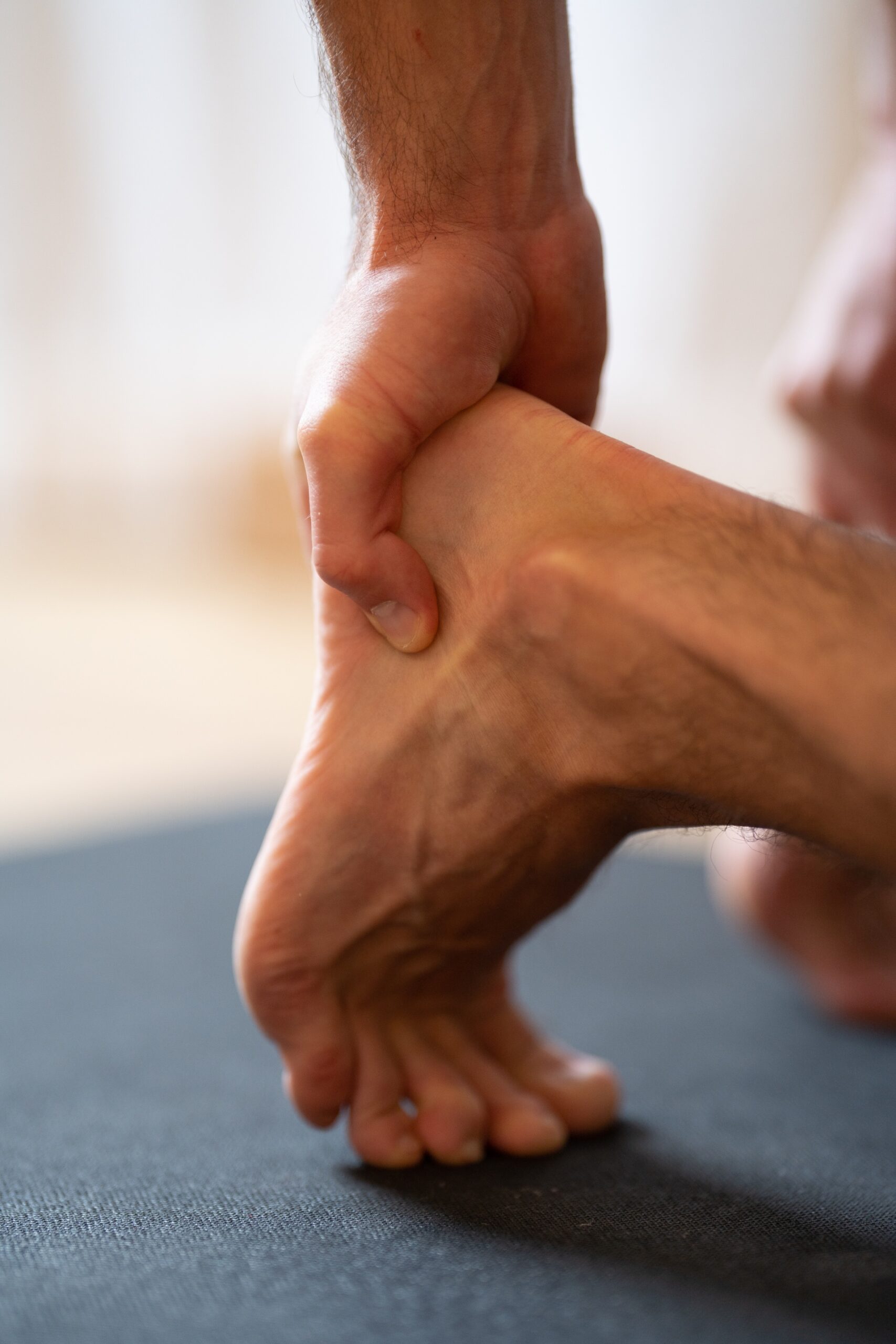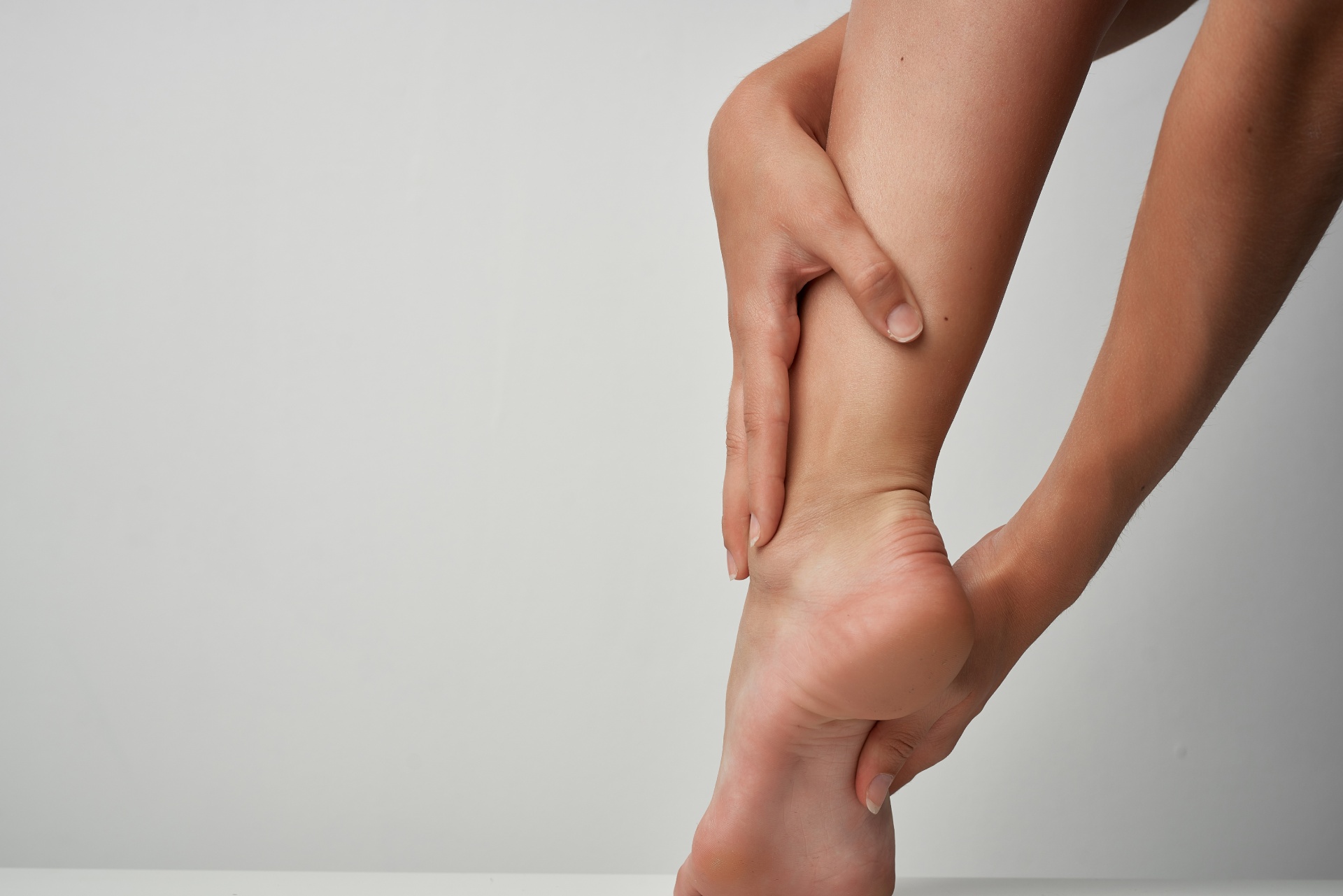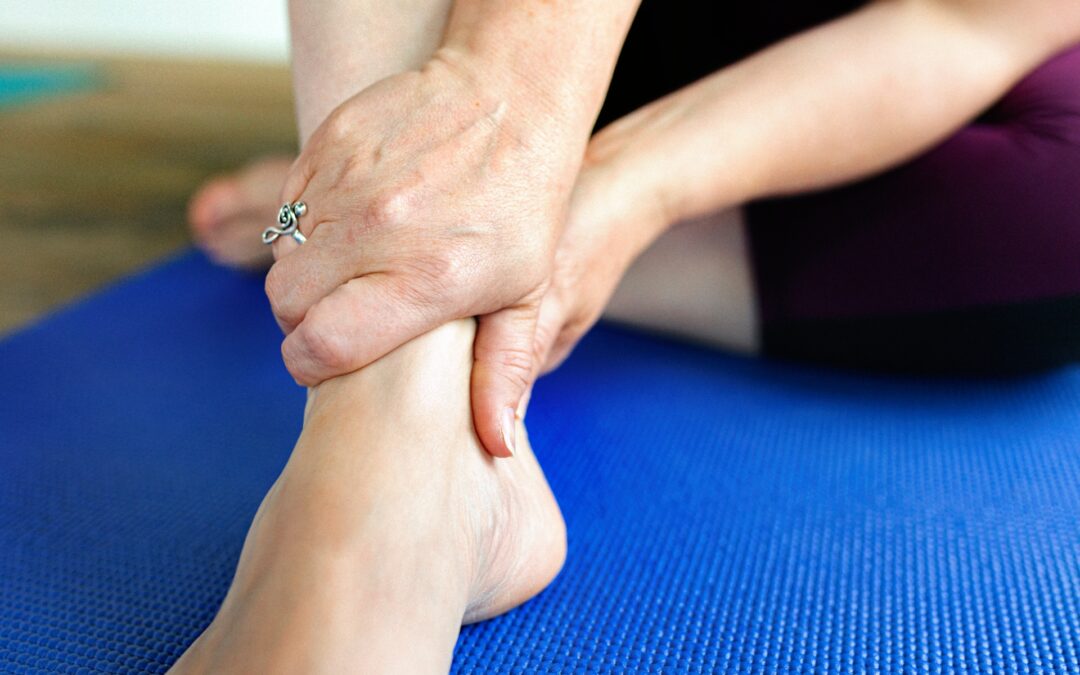The Achilles tendon, synonymous with vulnerability, is essential for walking, running, and even standing. As part of the ankle joint complex, it enables foot plantarflexion and propels each step. Despite its strength, its relatively poor blood supply makes it susceptible to injury. A solid understanding of an Achilles tear is key to effective management and lasting relief.
What Is the Achilles Tendon and What Is a Tear?
The Achilles tendon connects the calf muscles to the heel bone at the back of the foot and plays a central role in foot and ankle mobility during every step.
An Achilles tear may be partial or complete:
- Partial rupture: damage to part of the tendon fibres.
- Complete rupture: a full separation of the tendon fibres. Although walking may still be (painfully) possible, standing on tiptoes is not with a complete tear.
Causes and Risk Factors
An Achilles rupture often results from a combination of factors:
- Sudden trauma: a direct impact, a forceful twist, a fall, or a sports accident. Quick direction changes, sudden accelerations (sprinting), or poorly cushioned landings are common triggers.
- Sport and training load: activities with rapid movements, jumps, abrupt stops, or direction changes (basketball, tennis, soccer, running). Overuse without adequate recovery, poor warm-up, faulty technique, or muscle fatigue all increase risk. Rapid, excessive training progression is another contributor.
- Age and pre-existing conditions: natural loss of tendon elasticity and strength with age; reduced local blood supply. Conditions such as Achilles tendinopathy, infections, certain medications (e.g., corticosteroids), arthritis, diabetes, or other rheumatic disorders can weaken the tendon.
- Metabolic and mechanical factors: excess body weight, dehydration, and inadequate footwear that fails to provide proper support.

What Are the Symptoms?
Typical features of an Achilles tendon tear include:
- Sudden, severe pain behind the ankle or below the calf; pain may radiate down the leg or into the lower back.
- A characteristic sound or sensation: a “pop” or snap at the time of injury; many people feel as if they were “kicked” in the calf.
- Swelling and bruising around the heel, often accompanied by warmth and visible puffiness, can occur due to bleeding.
- Stiffness in the Achilles area, often with calf weakness.
- Difficulty walking and moving the foot, characterized by a painful, limping gait, and an inability to stand on tiptoes in complete tears.
- Visible deformity in severe cases, with a palpable gap along the tendon.
This injury can be misleading: people can sometimes still walk (with difficulty), delaying consultation and increasing the likelihood of needing surgery.
How Is It Diagnosed?
A precise diagnosis is essential to guide treatment.
- Clinical examination: history and a thorough physical exam. The clinician palpates the tendon and may perform tests assessing ankle movement when the calf is squeezed. This can be sufficient for an initial diagnosis.
- Medical imaging: ultrasound or MRI is often required to confirm the rupture, locate it, and assess its size, which is critical to determining healing time and whether surgery is indicated.
Treatment Options
Management should be prompt to ensure optimal healing. Two main pathways:
- Conservative (non-surgical) treatment
- Typically, for partial ruptures or complete tears with a minimal gap.
- Rest and immobilization with a cast, splint, or walking boot to allow natural healing.
- Stretching may be recommended progressively to restore flexibility.
- Foot orthotics for daily life and sport can reduce tendon loading; orthopaedic footwear may help.
- In more significant (but still non-surgical) cases, a walking boot or an ankle brace holding the ankle in plantarflexion can facilitate healing.
- Surgical treatment
- Complete ruptures often require surgery to suture the tendon ends.
- Surgery is considered when conservative care is insufficient or the lesion is extensive.
The Role of Physiotherapy
Physiotherapy is fundamental to recovery, whether you choose conservative or surgical care. In most Canadian provinces, you can see a physiotherapist directly without a physician’s referral; they will advise if a medical consult is necessary.
Your physiotherapist will perform a comprehensive assessment to determine tear severity and functional deficits, examining joint mobility, nerve glide, movement quality, strength, and stability.
Based on the assessment, physiotherapy typically includes:
- Joint, muscle, and nerve mobilization to reduce pain and improve movement.
- Targeted strengthening and stabilization exercises for the foot and ankle.
- Motor control training to optimize movement patterns.
- Activity dosing guidance for daily life and sport to promote safe healing.
- Posture and movement recommendations tailored to your context.
Rehabilitation and Healing Time
Rehab is a progressive process that often spans several months, aiming to restore tendon strength and function while preventing re-injury.
- Partial tears / minimal-gap ruptures (with brace or walking boot): healing generally 6–12 weeks, followed by ongoing active rehab for complete recovery.
- Post-surgical recovery: several months with structured, intensive rehabilitation. Caution is needed before returning to sport.

Conclusion
An Achilles tendon tear is a serious injury. With timely, appropriate care and a clear understanding of the condition, returning to full, pain-free mobility is an achievable goal. Consult a health professional at the first signs of injury, whether a sports medicine physician/orthopaedic surgeon or a physiotherapist.


Recent Comments